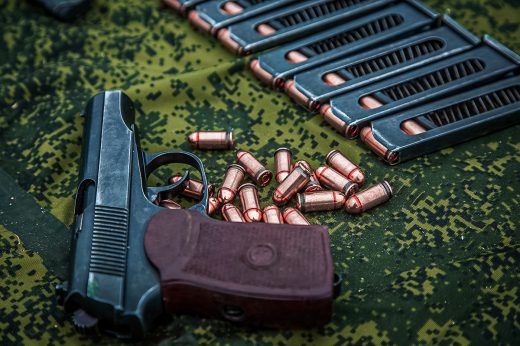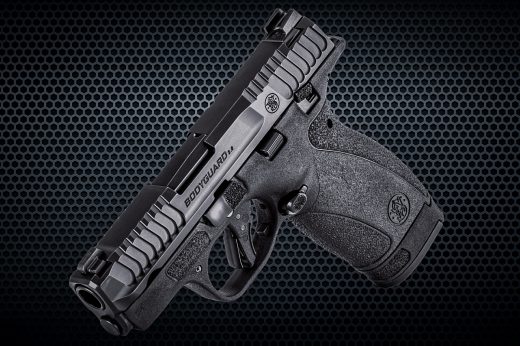Ammo prices have come down from pandemic peaks, finally re-entering the territory of not having to sell plasma to be able to afford to shoot. One caliber that remained mostly untouched was .22 Long Rifle, a storied entry in the family of rimfire cartridges with a rich history that we’ve covered elsewhere.
Shooting .22 LR is a fun, low-pressure (literally and figuratively), and affordable way to get trigger time, and is a great way to get new shooters accustomed to the experience of firing a live weapon. However, the task at hand is more complicated than simply going to the gun store, buying any .22, buying any .22 ammunition, and calling it a day.
Because this platform is considered so easy to shoot, many people underestimate just how finicky it can be, and with that in mind, here is our guide for how to buy the right .22 rifle.
Step 1: Familiarize Yourself With 22 Rifle Classics

There’s a reason why virtually every “Best 22 Rifles” list out there includes the Ruger 10/22, and it’s not because Ruger is paying them off to say that. It’s a tremendously reliable, accurate, and proven platform. Other options like the CZ 457 or pistols like the Ruger Mark series are similarly titans of 22 caliber performance due to their quality.
Another advantage of buying these common .22 platforms is that they’re designed from the ground up to be .22 caliber weapons rather than .22s mocked up to look like larger-caliber weapons. Inversely, buying a less-common or novelty 22 weapon can lead to having to work through the teething issues of less-tested firearms or the quality issues of manufacturers who treat .22 firearms as an afterthought. So leave the .22 caliber G36 replica on the gun store shelf and go with a proven standard.
Parts and modifications are another important consideration for any firearm purchase. While it’s nice to have a rare and unusual weapon, the reality is that parts break when used, and if you plan on getting any significant trigger time with a .22, it’s best to use something that is easy to repair without spending too much money.

Additionally, firearms like the Ruger 10/22 have an incredible aftermarket for different stocks, barrels, triggers, magazines, and accessory rails due to their popularity, which is another reason to go with a more common .22 Rifle for practicality’s sake.
Finally, the rich aftermarket means that you can take a basic platform and build it up to something truly premium piecemeal, which can be a good option for people who don’t have the money to spend thousands in one go.
Step 2: Know Your Needs
If you’re just getting into .22 rifle shooting, chances are you’re not going to be buying a biathlon rifle designed for Olympic athletes. Some people use .22 rifles for hunting small game or dealing with vermin species on their property. Others simply use them as training aids for new shooters, taking advantage of the low recoil and reduced muzzle blast to help shooters focus on their trigger pull, sight alignment, and other fundamentals.

Still, others use .22 rifles for competition events like bullseye or biathlon shooting. If you need an all-purpose varmint rifle, get something that works for a wide variety of applications and isn’t too heavy that you can’t carry it for long distances, too expensive to feel comfortable taking out into austere environments, or too fragile to remain accurate with rough treatment.
Step 3: Know Your Limits
.22 Long Rifle is not a high-power or long-range cartridge by any stretch of the imagination. Many commercial loadings experience significant bullet deviation at 45 yards due to the bullets being supersonic, and passing back through their own sonic boom shockwave at around that distance, known as becoming trans-sonic.
Combined with the fact that many commercial rounds are inconsistently loaded and therefore have inconsistent velocities, this prevents hitting targets at longer ranges without using specific hand-loaded ammunition. Even then, it’s not much compared to what could be achieved with a centerfire full-caliber rifle. .22 LR.
Similarly, .22 LR is not an exceptionally powerful round, not useful for any hunting other than small game. Don’t expect to be reliably taking down deer and bear with a .22 LR. This limits its utility as a hunting or defensive round compared to even pistol-caliber carbines, let alone centerfire rifles. For squirrel and rabbit hunting, however, it’s perfect and is one of the preferred calibers.
Step 4: Get Proper Ammo for Your 22 Rifle
More than many other calibers, ammunition selection for a .22 LR rifle is paramount. As mentioned above, many commercial loads of .22 are not up to the task of staying accurate, and ideally, you want to hit your target. For accuracy purposes, commercial loadings like SK Match are essential to ensure that your second round goes to the same place that the first did, assuming that you apply the fundamentals of shooting.
This becomes especially critical at distances over 50 yards, which is where many commercial loadings tend to struggle as they are impacted by their own sonic boom. Higher velocity rounds like CCI Minimag are good for short-range performance for hunting, but at longer ranges, they are more susceptible to wind deflection, and they will often go trans-sonic at shorter ranges.
Serious shooters will hand-load their rounds, although that is not always accessible or practical for most people, and it’s generally a bad idea to trust a random stranger’s reloads. That being said, knowing the right ammunition for your application is important since rounds designed for pure accuracy may not have the terminal effects needed for hunting and vice versa.
Step 5: Be Wary of 22 Rifle Reliability Issues
Due to the design of .22 LR cartridges, their feeding mechanisms, and the size of the parts used in the firearms they are loaded into, .22 shooting can often be frustrating. Especially with lower-quality firearms such as those from Kel Tec, or various conversion kits for higher caliber weapons, I’ve personally experienced abysmal reliability issues.
Similarly, there is an abundance of low-quality aftermarket parts for common .22 firearms, such as the Ruger 10/22, and it’s important to avoid buying cheap and tacky attachments that the manufacturer didn’t take seriously. Finally, make sure you use the highest quality magazines that you can afford on rifles with detachable magazines since I’ve seen many issues with 10/22s and aftermarket magazines.
The Takeaway
.22 Long Rifle can be some of the most enjoyable and inexpensive shooting out there, and it deserves a place in your collection of firearms. Oftentimes the first caliber that new shooters get to use, the .22 Long Rifle is manageable, can be reasonably accurate, and the firearms start at a much lower entry price. However, experienced shooters shouldn’t dismiss the .22 as something for kids and newbies.
One of my most enjoyable and fond shooting memories, standing above the experiences with machine guns, precision rifles, and bizarre multi-thousand dollar weapons that I’ve fired, was driving out into the desert with a friend of mine, taking her accurized 10/22 and seeing how far out we could ring steel plates with the same caliber that I first fired as a boy scout in 2007.
That experience of enjoying the outdoors with friends and the ease of shooting the .22 Long Rifle made the entire experience meditative.
22 Rifle FAQs
What are 22 rifles best for?
.22 Rifles excel at short-range target shooting at less than 200 yards and for hunting small game like squirrels and rabbits. They’re also excellent for teaching new shooters the fundamentals of marksmanship.
Is a 22 lethal?
.22 Long rifle can still be lethal with a lucky hit and, therefore, should be treated as being extremely dangerous, like any other firearm. While it’s not useful for self-defense or hunting larger game, since the round lacks the necessary kinetic energy, the rules of firearm safety should nonetheless be observed at all times.
Why is a 22 called that?
.22 refers to the caliber or fraction of an inch in diameter of the bullet. So .22 caliber bullets are approximately 22/100ths of an inch in diameter.
READ NEXT – The Remington 870: America’s Best-Selling Pump Shotgun










Comments